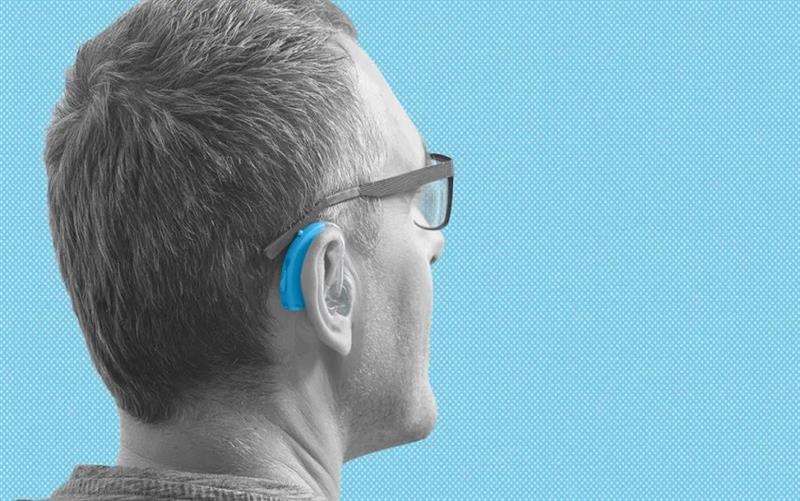
For those who have hearing loss, there are several different options for hearing aids. For various types and degrees of hearing loss, numerous types of hearing aids can be helpful. A hearing instrument specialist can assist you in deciding which solutions could be ideal for your needs if you would benefit from using hearing aids.
The majority of those with hearing loss use air conduction hearing aids, one of the options offered. In addition to air conduction devices, alternative choices include cochlear implants and bone conduction devices. Continue reading to learn more about several kinds of hearing aids, including air conduction ones.
Earphones with air conduction
Air conduction hearing aids and bone conduction hearing aids are the two forms of conventional hearing aids. Most likely, you already have some familiarity with air conduction hearing aids. They come in styles that are worn behind, within, or in the ear canal. Although some styles would need to be fitted to ensure comfort, they can simply be worn as needed. On the other hand, bone conduction hearing aids demand an implant. The so-called "bone-anchored hearing aids" (BAHAs) connect to a tiny implant that is surgically affixed to the skull.
Other kinds of hearing aids are now available to assist those who are hard of hearing. Another form of hearing aid that may work for some people is bone conduction technology. There are numerous implant types that can help with certain forms of hearing loss.
Implantable hearing devices
For those who might not benefit the most from air conduction hearing aids, bone-anchored hearing aids or bone conduction devices are another choice. For those who, for instance, have collapsed ear canals, they may be helpful. In the bone behind the ear, they use an implant. It transmits sound directly to the cochlea by vibrating the bone.
Middle ear prostheses
Another type of implant that may be helpful for those with mild to severe conductive or sensorineural hearing loss is a middle ear implant. For those who are unable to wear an air conduction hearing aid owing to itchiness, allergies, deformed ears, or other concerns, it may be an option. It contains an internal component that consists of an implant linked to one of the small ear bones or close to the cochlear membrane window, a receiver placed just below the skin, and an external processor.
Implanted cochlea
People with severe or profound hearing loss have the option of cochlear implants. Although it is not the same as a natural cochlear, the implant can aid in providing a feeling of sound. Understanding what to expect from a cochlear implant is crucial, but those who lose their hearing after picking up spoken language may benefit most from them. By directly activating the auditory nerve, they function.
Brainstem implants for hearing
The possibility of an auditory brainstem implant may also be considered by those who have severe sensorineural hearing loss. This consists of an internal component that is surgically implanted as well as an external processor worn on the ear. The implant sends sound directly to the brainstem by avoiding the cochlear and hearing nerves.
Who Can't Wear Hearing Aids With Air-Conduction?
Two categories of persons typically aren't able to use air-conduction hearing aids. Those with recurrent ear infections come first.
Standard hearing aids cannot be worn by a very tiny percentage of persons due to bacterial development in the ear. A bone-anchored device implant is frequently the only way to stop recurrent infections.
Those with deformed ear canals make up the second category of individuals. The shape of the ear can make wearing a standard hearing aid occasionally biomechanically difficult.
Different Styles Of Air-Conduction Hearing Aids Are Available
The most styles are available for air-conduction hearing aids because they make up the majority of the market.
Hearing instrument specialists (HIS) frequently keep a variety of form factors in stock, each with a few subtle differences in its uses and applications.
The most popular type of air-conduction device available today is behind the ear (BTE). These are divided into two parts: a speaker that fits within the canal and a battery compartment that rests behind the ear. The two sections can communicate with each other thanks to a little conduit.
BTEs provide several benefits despite being huge and noticeable. First, they provide customers features like longer battery life that are typically unavailable on smaller devices. They also provide more amplification for people with severe hearing loss,
BTE-like receiver-in-the-ear (RITE) devices include a speaker component that fits in the canal, while RITE devices don't. They instead use a lengthy tube to transmit sound from the behind-the-ear component to the eardrum.
The opposite is done via in-the-ear (ITE) devices. They merge the essential parts into a single part that fits in the ear and eliminate the segment that loops around the back of the ear.
Are Air-Conduction Hearing Aids Right for You?
You should probably select an air-conduction hearing aid if you have hearing loss. This kind of assistive gadget has more functions in addition to being easier to choose and fit.
The features of contemporary air-conduction hearing aids
- They have Wi-Fi and Bluetooth connectivity so you can pair them with gadgets.
- Directed microphones that let you concentrate on the person in front of you
- Telecoils that pipe sounds from the telephone directly to your ears Automatic
- Setting modifications as you transition from one sound environment to another
- Many channels for boosting particular frequencies
- Updates and fixes for software to enhance patient experience and sound quality
- The capacity to rapidly switch between profiles and preserve your settings
It's ideal to keep yourself as educated with your hearing aids and a new breakthrough in the technology. Ask your query via Book an Appointment today. For more information visit https://hearing.careinc.ca or you can call us today at (403)605-6300